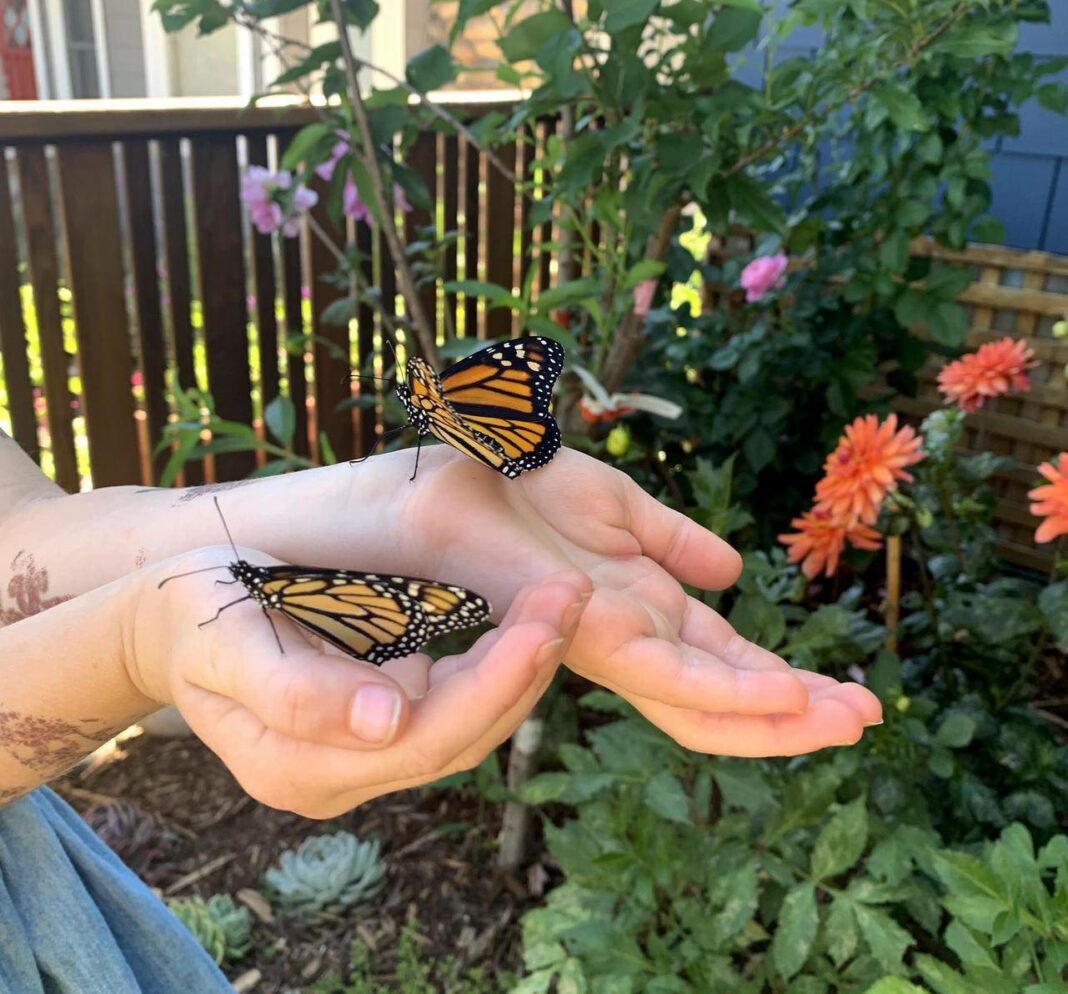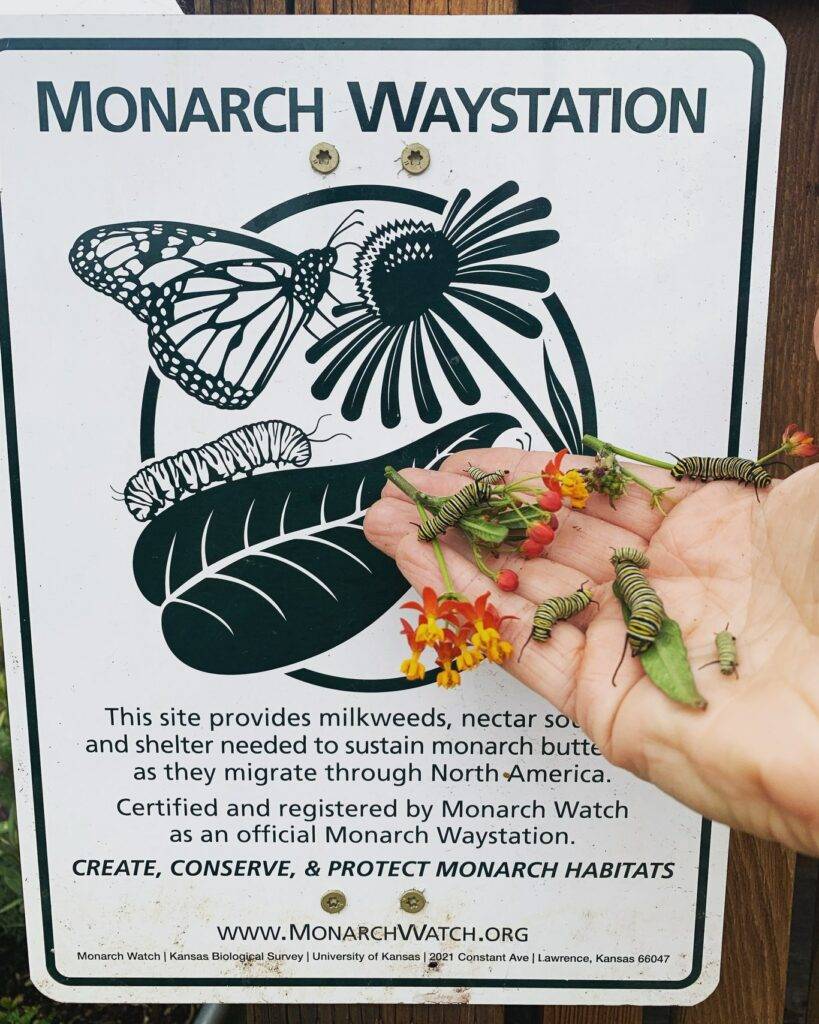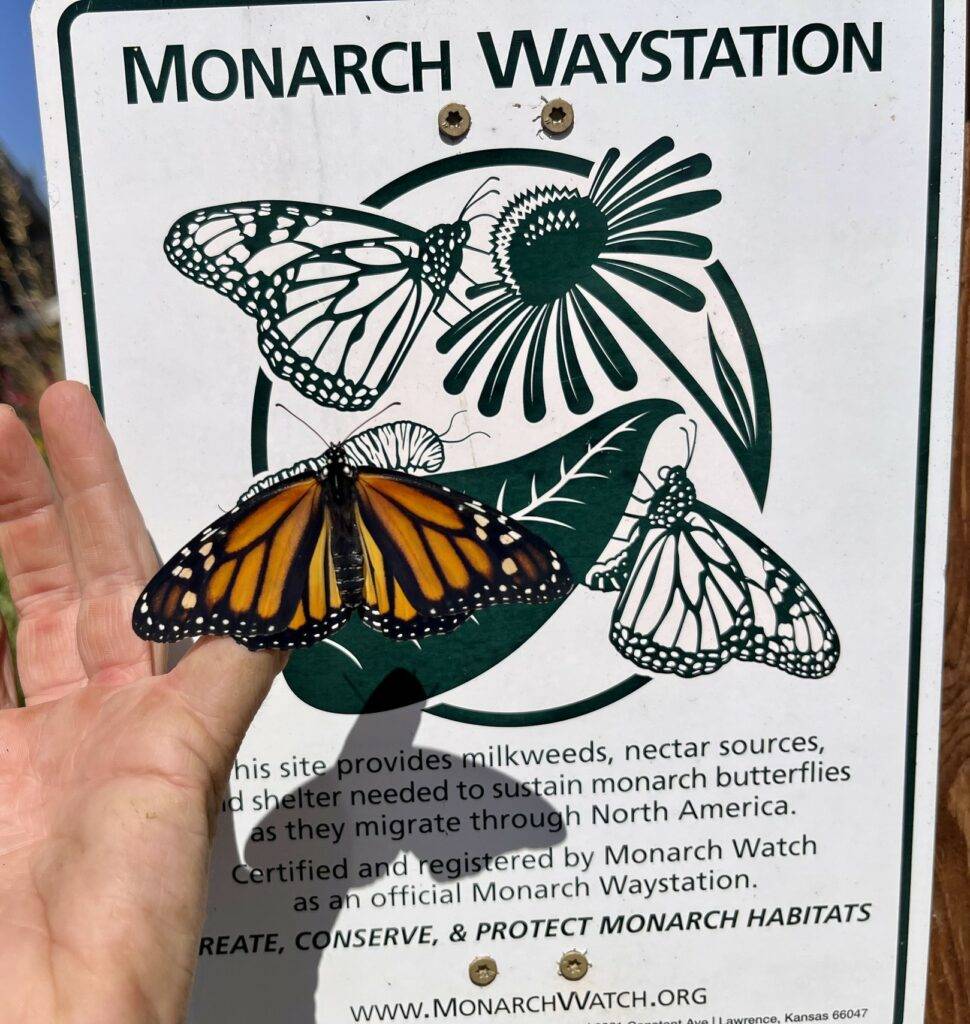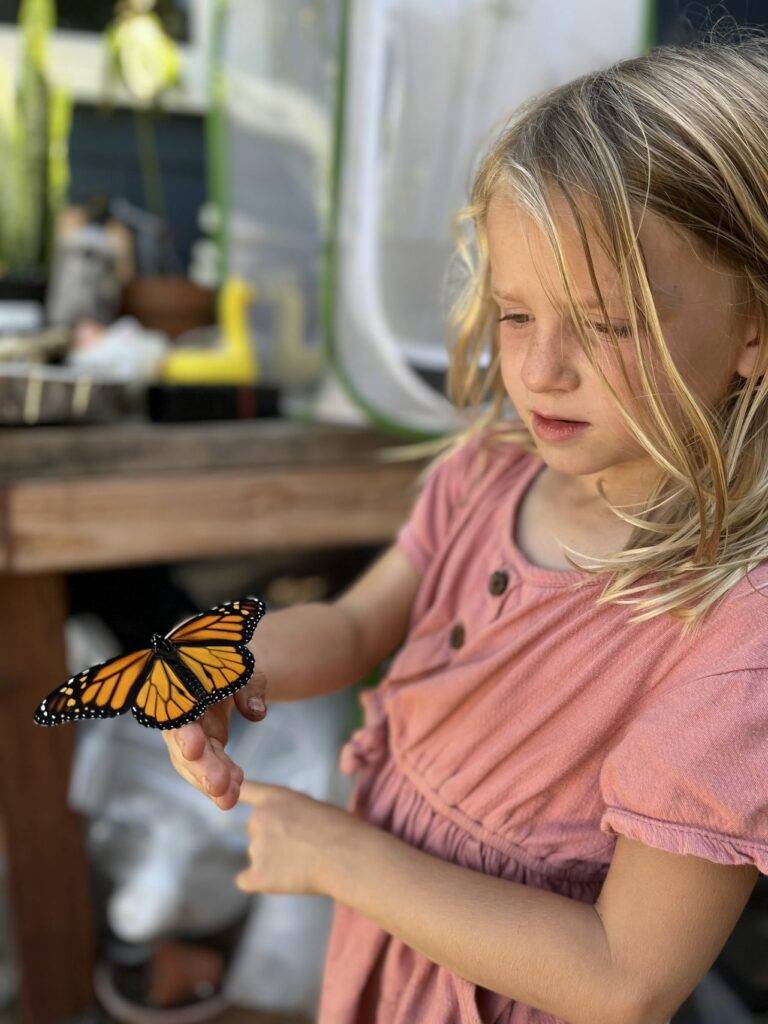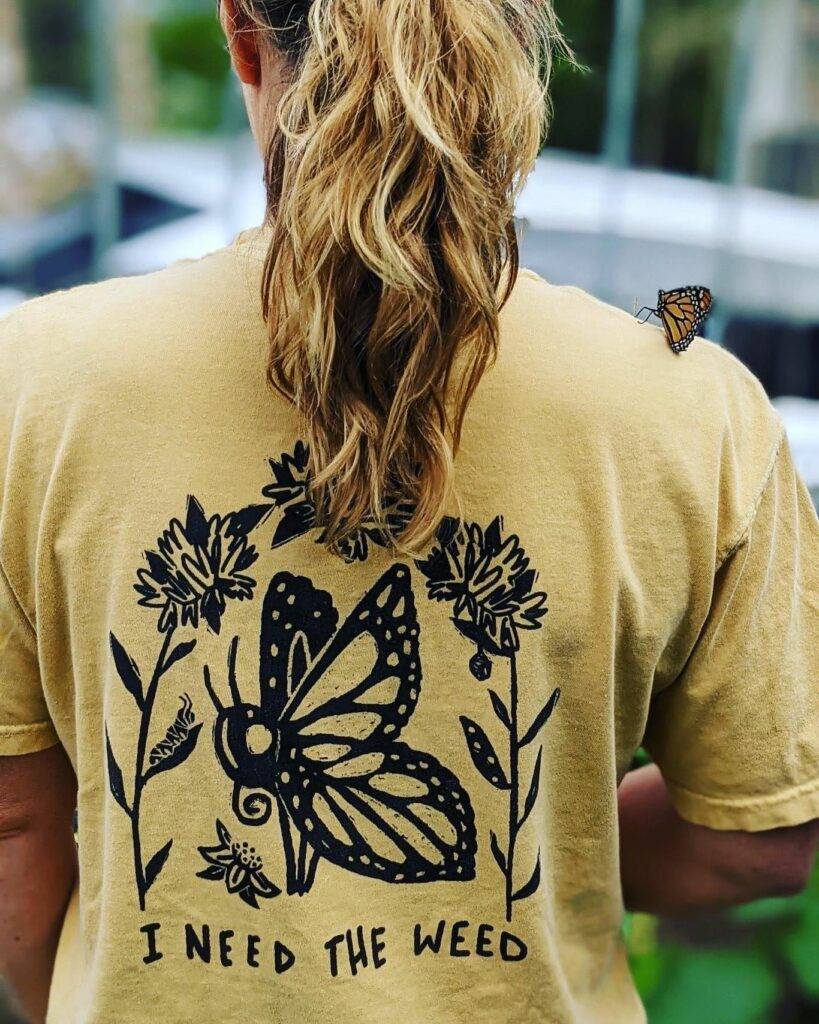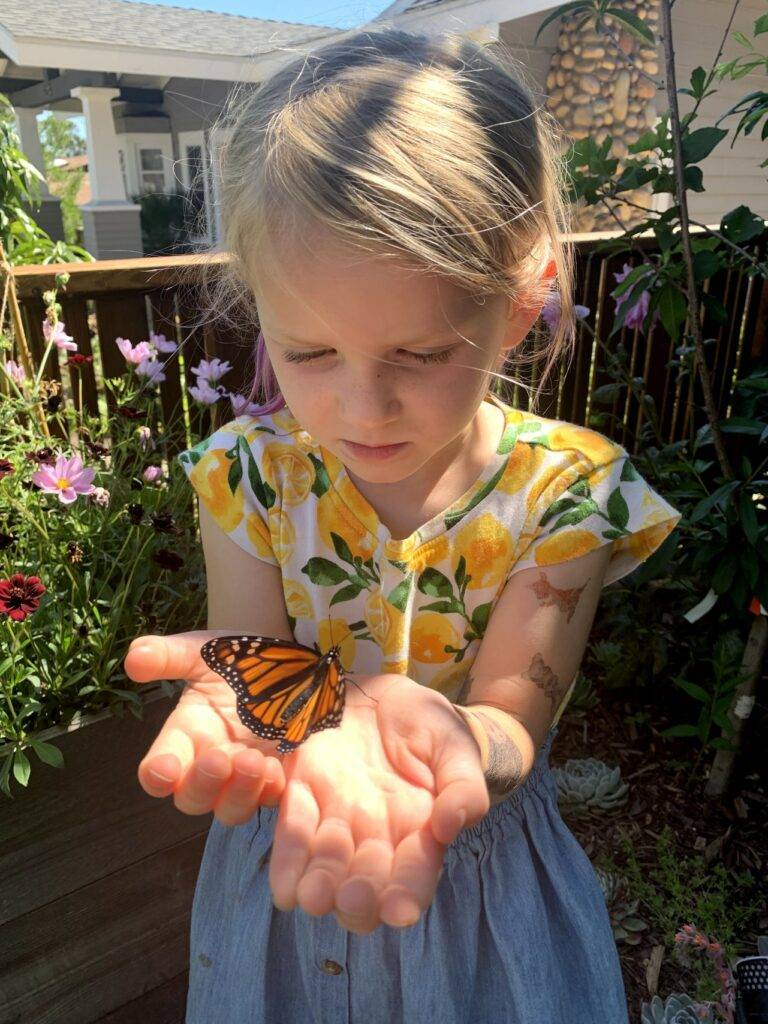Got milkweed? That’s just one of four simple steps to luring and supporting monarch caterpillars and butterflies.
Our gardens, like monarchs, seem to be constantly evolving and flowing through various life cycles. If we remember to view our garden as a living ecosystem and not a snapshot in time, then we are constantly changing, supporting, and planning for our current and future seasons. With this mindset, we can commit to creating a monarch waystation at any time. We don’t have to wait until spring!
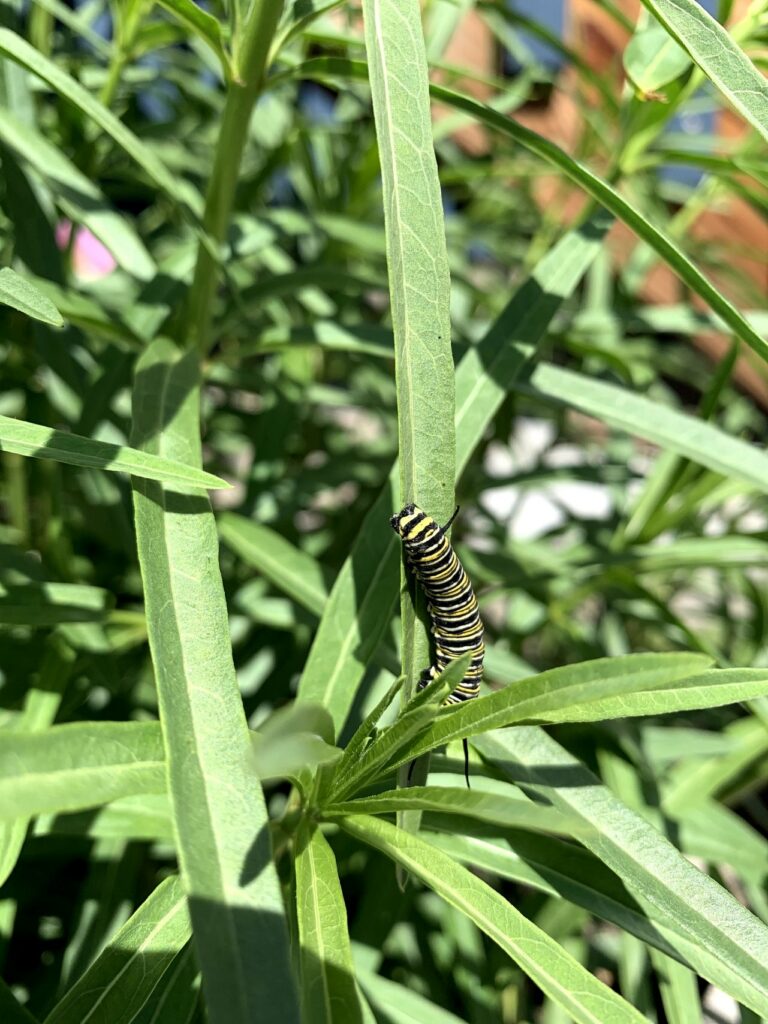
Did you know that monarch butterflies are categorized into two groups, Western and Eastern, with the Rocky Mountains dividing the two? Here in San Diego, we are visited each spring to fall by the Western Monarch. When it’s time to migrate, most of them travel to the central coast of California to overwinter, while the Eastern Monarch typically heads south to Baja.
Over the past two decades, the monarch population across the United States has rapidly declined due to the loss of habitat and the increasing use of pesticides in our agricultural practices. The Xerces Society has documented a decline of more than ninety percent in the western monarch population during their annual migration.
While their numbers are down, there is hope and it starts with us! Committing your green space to become a Monarch Waystation might feel small and insignificant in this vast world, but to each butterfly that finds milkweed to lay an egg on or nectar-rich flowers to fuel their migration, it matters. The added bonus of supporting monarchs in your garden is connecting your green space to the larger ecosystem and supporting all pollinators, like bees, moths, birds, and ladybugs.
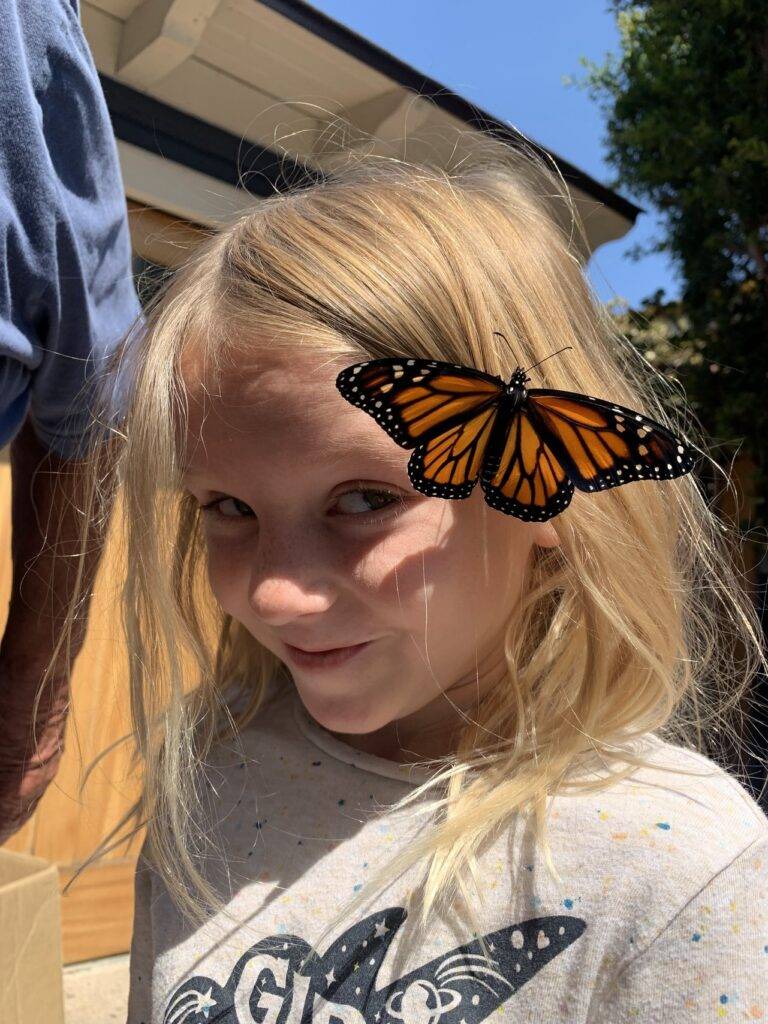
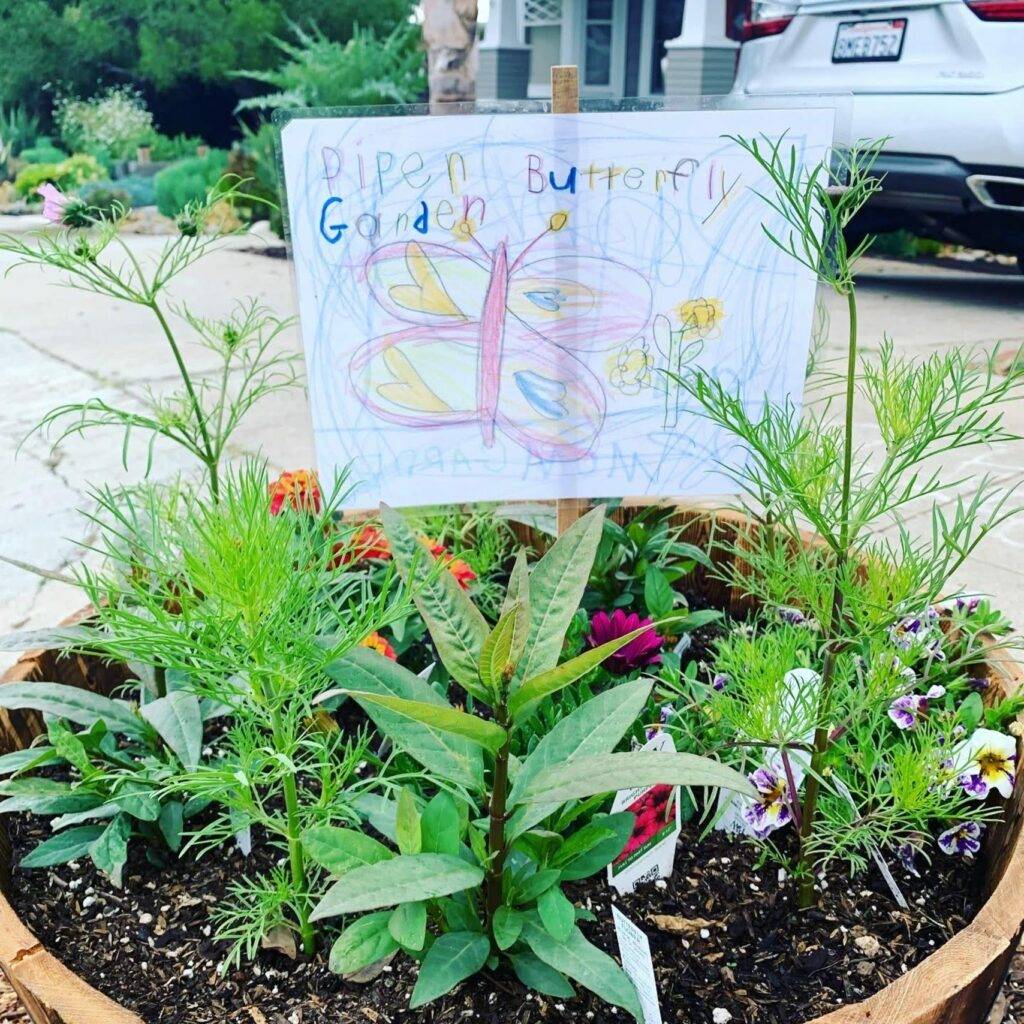
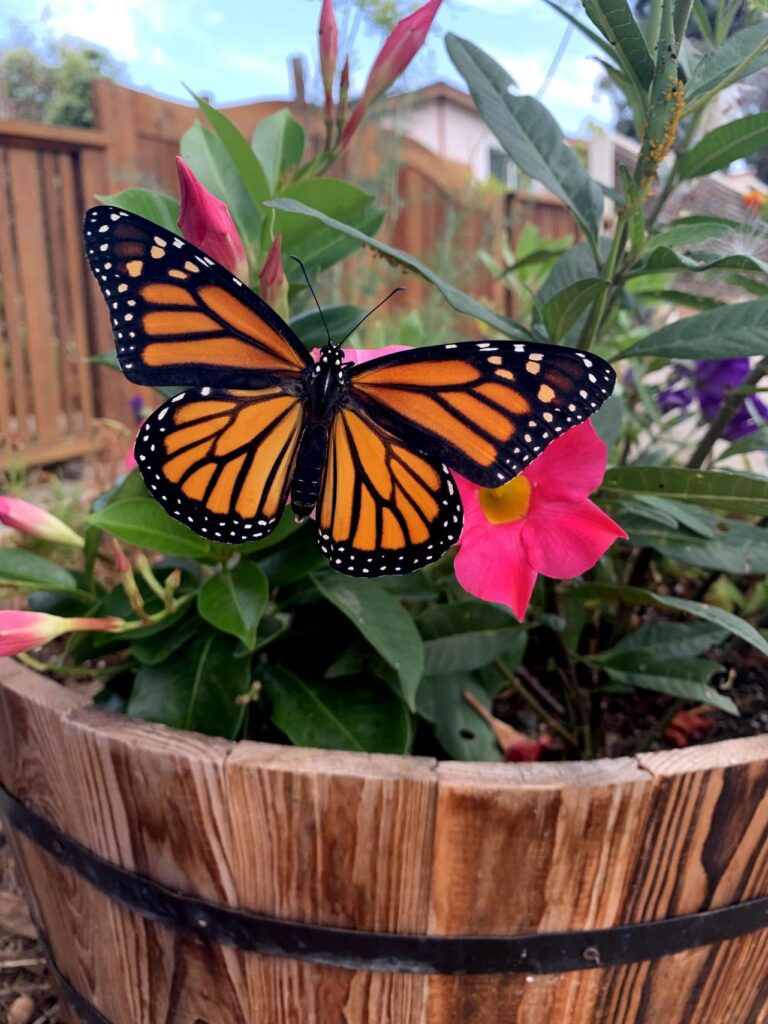
We love butterflies at our home, but saving an entire species feels overwhelming and daunting — but it doesn’t have to be. By creating a monarch waystation, we are contributing to their recovery and investing in healing our Earth.
This is a great project to get your kids or neighbors involved in! Follow the simple steps below to create a waystation in your yard or community garden, and then visit Monarch Watch to learn more about monarch conservation and register your waystation. You can also order a sign that makes your garden look really cool!
Pick the right spot in your garden.
Consider size, shelter, and exposure when designing your waystation. Ideally, a waystation can dedicate at least 100 square feet of outdoor space to milkweed and nectar-rich flowers. Keep in mind, this can be spread throughout your garden and include pots and raised beds. Identify areas in your garden that get a minimum of six hours of daily sunlight. Think about planting milkweed in clusters surrounded by nectar plants to create shelter for all stages of the monarch’s life cycle and an escape from weather and predators. For those starting their waystation in the fall, you have the added bonus of time to design and create a garden that can support a waystation capable of thriving season after season. The cooler months are the perfect time to get natives established in order to build a strong ecosystem for the spring.
Plant lots of milkweed.
Milkweed is the host plant for monarchs, meaning it is the only plant that female monarchs lay their eggs on and the food source for growing caterpillars. A waystation needs at least ten milkweed plants and ideally two different species. The priority should be to plant native milkweed, which will naturally go dormant in the fall/winter. In San Diego, great native options that are available at nurseries are narrowleaf (Asclepias fascicularis), woolly pod (Asclepias eriocarpa), and showy (Asclepias speciosa).
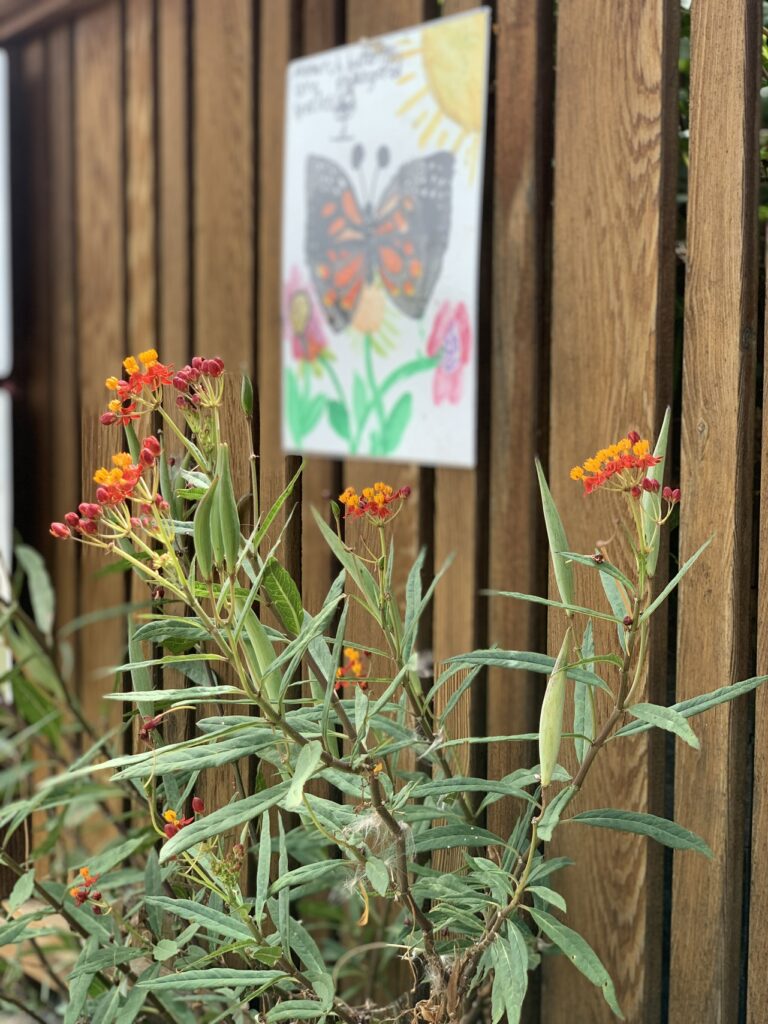
Non-native tropical milkweed does not go dormant in the winter, so it can disrupt the natural migratory patterns of monarchs. Additionally, tropical milkweed is more prone to a parasite called Ophryocystis elektroscirrha, or OE, which can cause deformities or death in monarchs. If you do have tropical milkweed in your garden, make sure to prune it down to about six inches and remove all leaves by Halloween to reduce OE and encourage migration.
Pro tip: SDG&E’s Community Tree Rebate Program includes both narrowleaf and woollypod milkweed. Get paid to plant milkweed!
Don’t forget flowers!
Once monarchs emerge from their chrysalis, they need ample access to food via nectar-rich flowers throughout the season. Plant flowers that will either bloom continuously from spring to late fall or plants with a staggered blooming season. A mixture of annuals and perennials will ensure monarchs have food throughout their breeding season and migration. Great native options are yarrow, coyote mint, clarkias, sages (hummingbird sage is a personal favorite), and verbena. For a more complete list, check out this one from The Xerces Society.
Register your monarch station.
Join the movement and for a small donation toward their conservation efforts, you can certify your waystation by registering it with Monarch Watch. For an additional fee, you can purchase a waterproof sign to hang in your garden to educate your neighbors and garden visitors on their role in saving the monarchs. I promise you won’t be disappointed when your garden is filled with butterflies fluttering around saying thank you.
Read more about Attracting Pollinators to Your Garden and Creating a Native Pollinator Garden With Containers.
Follow the monarch life cycle.
—Video by Laura McLean

